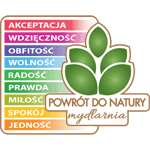 Informujemy, że 2 maja br. jest dla nas dniem wolnym od pracy. Zamówienia będą wysyłane do wtorku 30. kwietnia, a następnie 4. maja br.
Informujemy, że 2 maja br. jest dla nas dniem wolnym od pracy. Zamówienia będą wysyłane do wtorku 30. kwietnia, a następnie 4. maja br.
Nowe prodkuty
Darmowa dostawa
Na terenie Polski oraz dla zamówień powyżej 500 zł
Gwarancja satysfakcji
Twoje zadowolenie to dla nas największa nagroda.
Bądź na biężąco!
Zarejestruj się w naszym sklepie i polub naszą stronę na Facebooku, aby być na bieżąco z nowościami oraz otrzymywać okazjonalnie kupony rabatowe uprawniające nawet do 15% na wybrane produkty!


